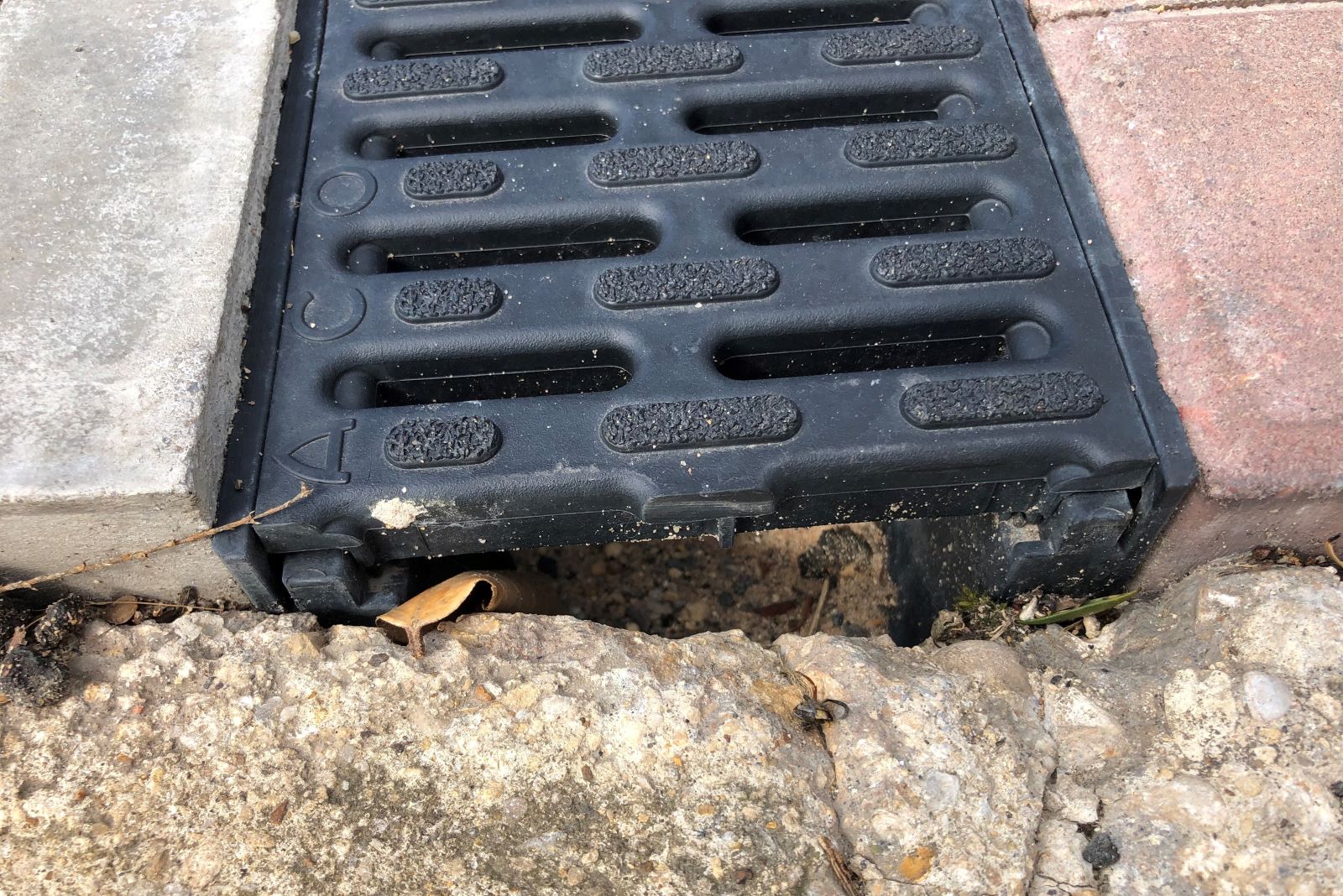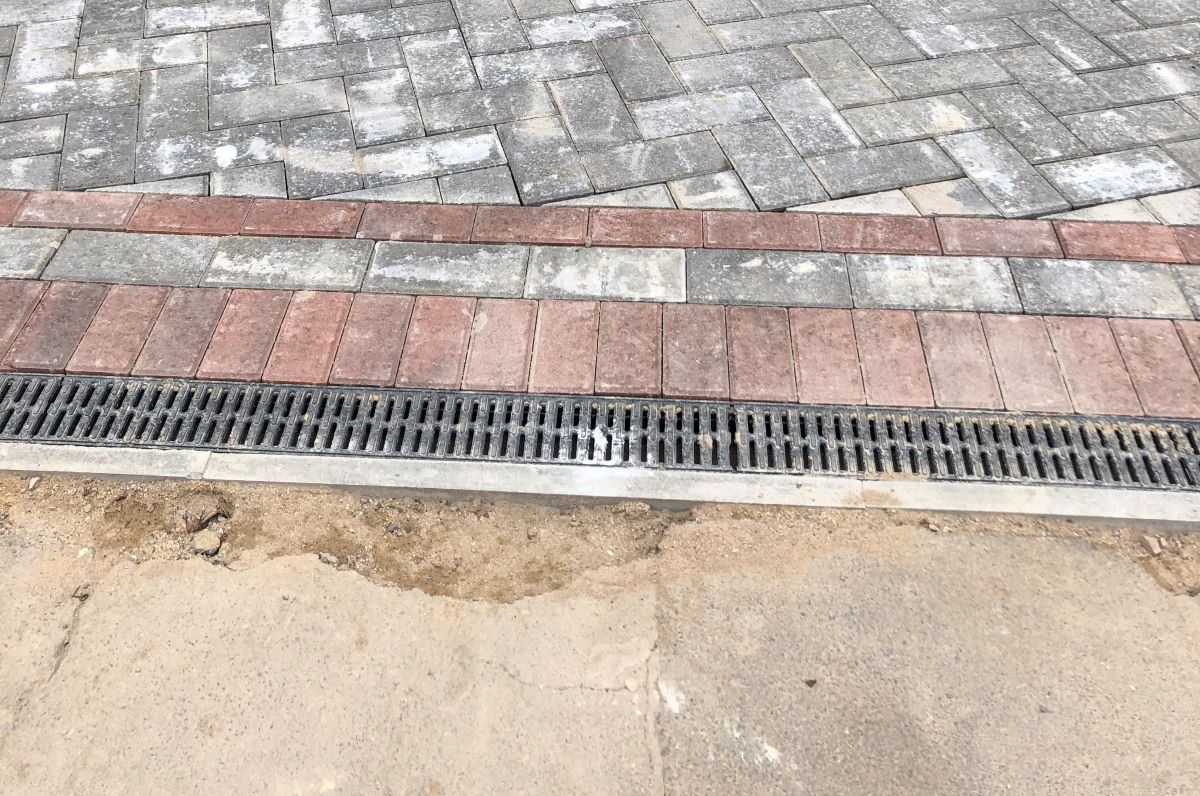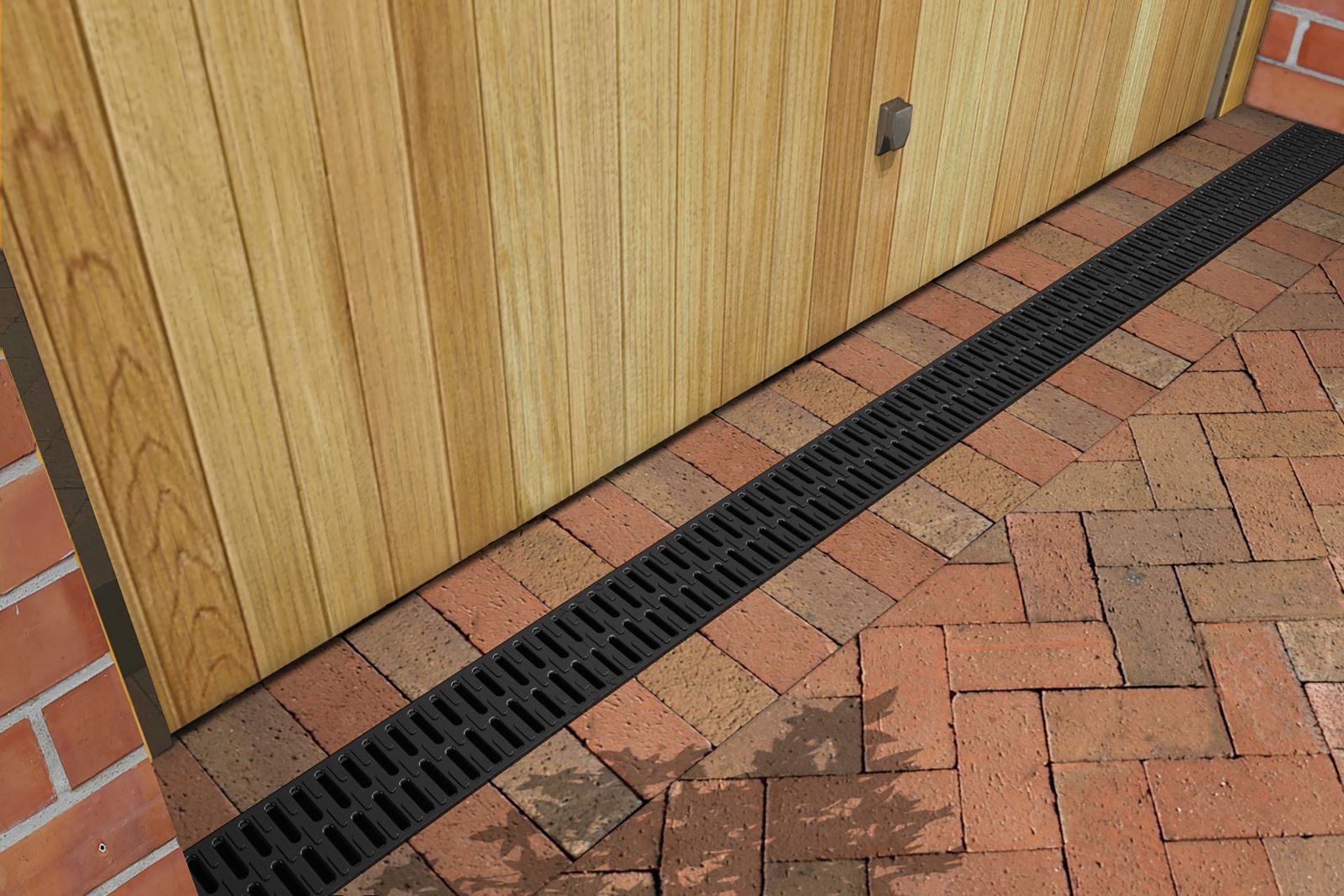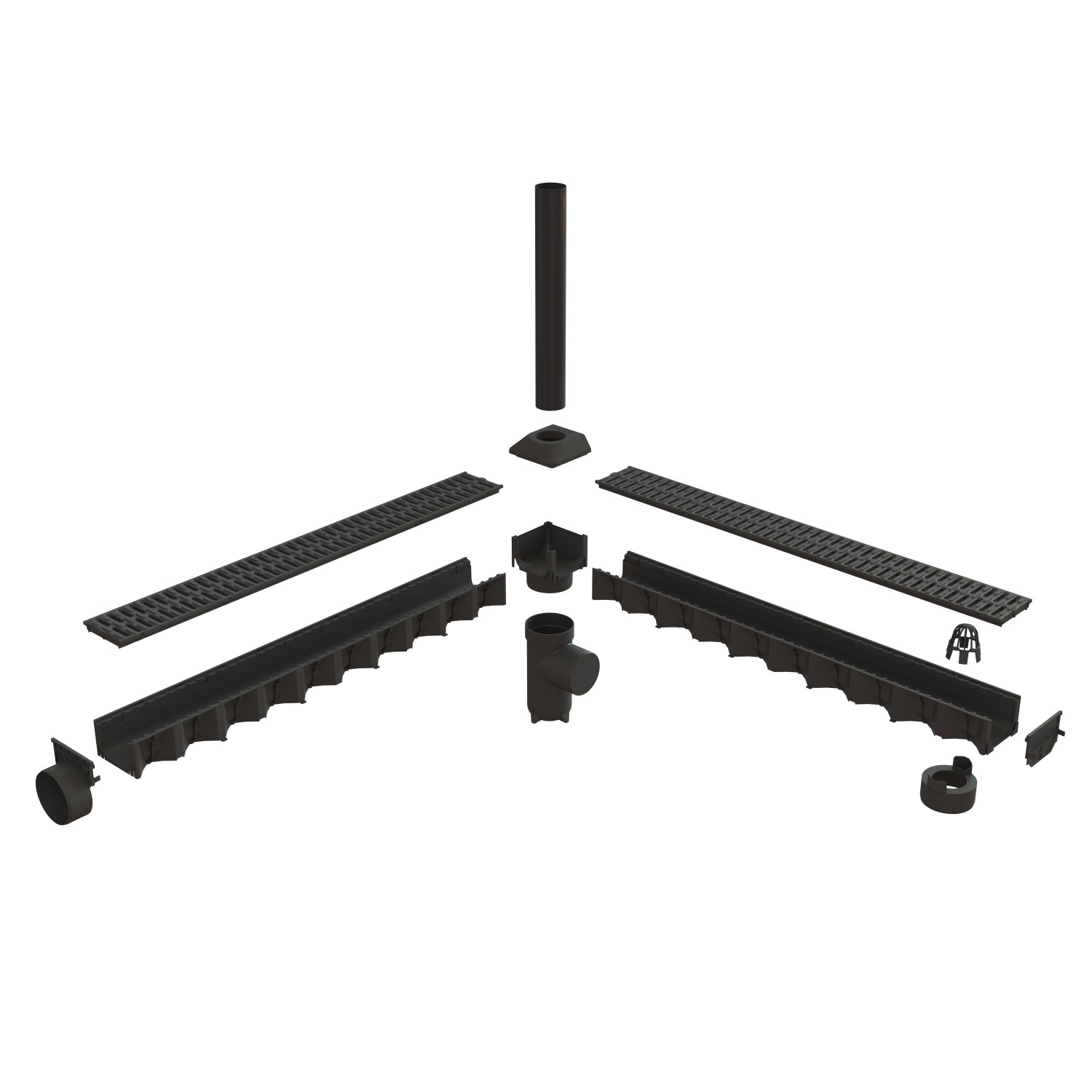
We all take shortcuts: some are fine, others not so much. Yet most of us learn, sometimes the hard way, that shortcuts can end in disaster. Angus Crichton, Marketing Manager at ACO House & Garden, discusses how taking a shortcut with channel drains will almost always turn out badly.
The basic function of a channel drain is in the name: it channels rainwater runoff from where it is not wanted to where it is. Yet installation shortcuts result in the rainwater not being directed away from the channel’s location, resulting in problems later.
One example of this occurred not long ago to Tony and Tina Joyce, who purchased their 2019 new build in summer 2022. The property included a run of channel drain to protect the garage threshold. But once the rainwater had drained into the channel, there was nowhere else for it to go — the channel wasn’t connected to the stormwater drain.
In another instance, I personally witnessed the installation of a run of ACO HexDrain on an Oxford driveway with no endcaps. Again, the rainwater was left to drain into the surrounding subbase. This is otherwise known as phantom drainage — when the installation does not remove the rainwater from the channel’s location.

The failure of phantoms
Allowing water to escape into the underlying subbase and subgrade will weaken the load the paving can bear over time, leading to slumps and even movement of the paved surface. A Surrey-based builder, with 45 years’ experience in the building trade, told me about an entire paved driveway that slid into the road after heavy rain. It had been installed on a slope with phantom drainage.
It may all seem like a cost-saving shortcut, but it can have disastrous consequences for a contractor’s reputation, who will incur considerable expense to correct faulty work. Therefore, it is critical that the channel drain is sealed and connected to onward drainage — and that is where accessories come in.
Essential accessories
ACO channel drains come with a wide range of accessories to ensure runoff is channelled in a responsible, legal and sustainable manner. Accessories should not be thought of as optional as they enable your customers to achieve the following:
Seal: Clip-on endcaps with additional sealant ensure rainwater stays in the channel. These are far more secure and speedy to install than hunting around the site for the right sized piece of slate.
Corner: Channel drains often need to follow the building or paving footprint which will require corners or T-junctions. ACO supplies corner units for each of its channel systems, with knock-out pieces to connect up to four channel runs.
Clean: A sump unit before or within the outlet removes inevitable silt, preventing the pipework or downstream soakaway from becoming clogged. A leaf guard over the outlet gives extra protection from debris. Access units are essential for a run of slot channel drains to allow regular maintenance.
Connect: ACO channels come with vertical outlet knockouts, while endcaps can be replaced with horizontal outlets. Because of this, the outflow options can be tailored to the most suitable location for the downstream drainage connection. Round and square downpipe connectors can be clipped onto the channel just like a grating to take rainwater from roof drainage into the channel.
Extra sales for merchants
Current legislation already demands rainwater is disposed of on-site. For example, at the front of a property, if a new drive is laid or renovated and the area is more than 5m2 (England and Wales, 0m2 in Scotland), rainwater must be dispersed onsite and not allowed to leave the property. Therefore, customers need a channel drainage system — ie: not just the channels, but the accessories that ensure the rainwater is disposed of appropriately.
Recommending the ACO channel drain system will enable customers to get the job done swiftly and effectively — and may even result in additional sales for merchants. What’s more, the ACO channel drain system can form part of a sustainable drainage solution, from roof to ground level, that keeps rain out of the drainage system, helping prevent sewage overflows into waterways.
Phantom drainage is a dangerous shortcut that can be entirely avoided with the right solutions. ACO’s portfolio of drainage solutions and accessories provide drainage professionals with everything they need to install a complete drainage solution.
ACO’s Product Trainer Adam Donnaloia supports merchants in-person or online to learn about ACO’s channels and accessories. They can then advise their customers on providing safe and sustainable drainage and help fight phantoms.
Click here to find out more about how ACO accessories are essentials for any drainage project.


The system and essential accessories required for a successful installation (showing the ACO Hexdrain A15 system).









